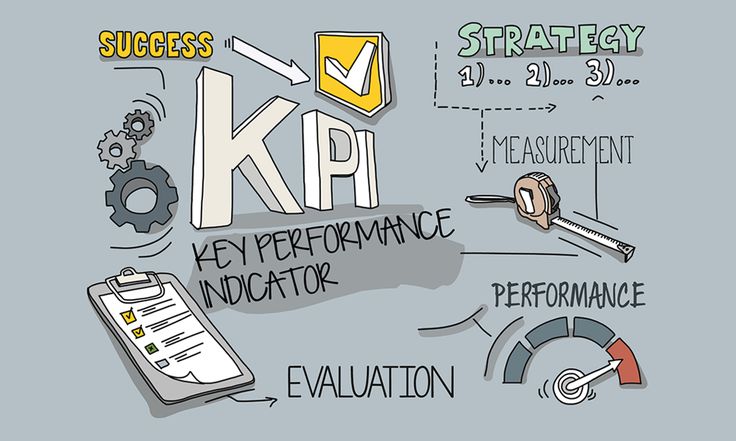
12 Tips for Choosing Effective KPIs
With the ease of data collection in today’s technological landscape, it’s easy to get bogged down in performance metrics. But “more numbers” doesn’t always translate into a better understanding of what your company needs.
To figure out what Key Performance Indicators (KPIs) are most useful for a startup, we asked 12 entrepreneurs the following question: How should you go about selecting KPIs for a startup?
1. Avoid Vanity Metrics
It’s easy to look at numbers like pageviews, signups, likes, etc. But what you really need to ask yourself is whether any of these move your business forward. Vanity metrics are risky because they often look good without substance. Find metrics that have direct correlations to your bottom line and the progression of your business, and you have your KPIs. – James Simpson, GoldFire Studios
2. Look Beyond the Numbers
People can get caught up in the numbers, but quality is more important. KPIs are important, but they should be centered on quality and not just growth. The most important things in life and in business are not measurable. Becoming too obsessed with KPIs means important things that are harder to measure may fall by the wayside, hurting your business more than KPIs can help. – Dan Price, Gravity Payments
3. Ask Them About Their Vacation Time
Ask your key executives the following question: “If you were away on vacation for two weeks, what are the two questions you would ask to identify how your department is performing?” Their answers will provide you with a preliminary road map you can use to select your KPIs. – Kelcy Pegler, Jr, Roof Diagnostics
4. Look at Similar Companies
Contact an investment banker and ask how similar companies are being evaluated and acquired. Are they being valued on revenue, content, profitability or traffic? Look at financial analysts’ reports on publicly-held companies as they’re valued on future profitability or revenues. Understand how more experienced businesses, public or recently acquired, were valued, and backtrack from there. – Luke Skurman, Niche.com
5. Let the Data Decide
A static set of KPIs will lead to missed signals from leading metrics that might have been valuable. Instead, create a system that collects all of your metrics but only shows you the ones that are performing particularly well or poorly. Consider tools like RJMetrics or Chartio. Then you can spend more time focusing on the root causes driving those metrics. – Aman Advani, Ministry of Supply
6. Tie Metrics to Actions
A good KPI points you to where you need to take action. If a change in your KPIs doesn’t inspire you to act, then you have the wrong ones. Examples of this are things like marketing ROI by campaign or sales performance by market segment. When you see changes in these indicators, it’s very clear what needs to happen. – Robert J. Moore, RJMetrics
7. Create External Progress Reports
We don’t do KPIs. We do, however, draft an investor newsletter every six weeks. Having to demonstrate progress to someone external on a regular basis is a huge motivator for the team. – Ioannis Verdelis, Fleksy
8. Look at It From the Customer’s Perspective
Looking at it from the customer’s point of view is the way to go. Measure the experience the client is having and what the prospect is going through. Then score it, pivot it, etc. – Ilya Bodner, The Shipyard
9. Identify the Audience
First, identify the audience. KPIs are specific to the goal. I recommend having KPIs for customers, financials, and other stakeholders. For each of these, ask the basic question: “What are the three most important factors you would want to improve?” – Ashish Rangnekar, BenchPrep
10. Start From the Top
Every startup has different goals. Some aren’t expected to generate revenue but are instead looking for investors, awareness, or a target number of users. Once you make a decision on priorities based on these goals, think of KPIs like a funnel. The company’s high-level objectives are on top. They funnel down to each team and finally become the metrics that measure the success of individual team members. – David Hassell, 15Five
11. Focus on Fewer Variables
I’ve seen KPI dashboards that have 17 different variables, thus making us question what was actually key and what was actionable. Choose the three to five variables that actually matter and that you can actually affect, either because you understand what drives them or have the capabilities on your team to change. – Charlie Gilkey, Productive Flourishing
12. Maintain Customer Satisfaction
The most important thing to get right when building an early-stage startup is maintaining great customer satisfaction. Revenue will follow if you have happy customers. Using a platform like Gainsight, which integrates directly into Salesforce.com, will help you focus on reducing churn, identifying possible up-sells, and driving adoption. – Michael Costigan, Youth Leadership Specialist
Hello!
I’m Andrew Brooks, a seasoned finance consultant from the USA and the mind behind phonenumber247.com.
My career is built on a foundation of helping individuals and businesses thrive financially in an ever-changing economic landscape. At phonenumber247.com, my aim is to demystify the complex world of finance, providing clear, actionable advice that can help you navigate your financial journey with confidence. Whether it’s personal finance management, investment strategies, or understanding the nuances of market dynamics, I’m here to share insights and tools that can propel you towards your financial goals.
Welcome to my digital space, where every piece of advice is a step closer to financial clarity and success!
